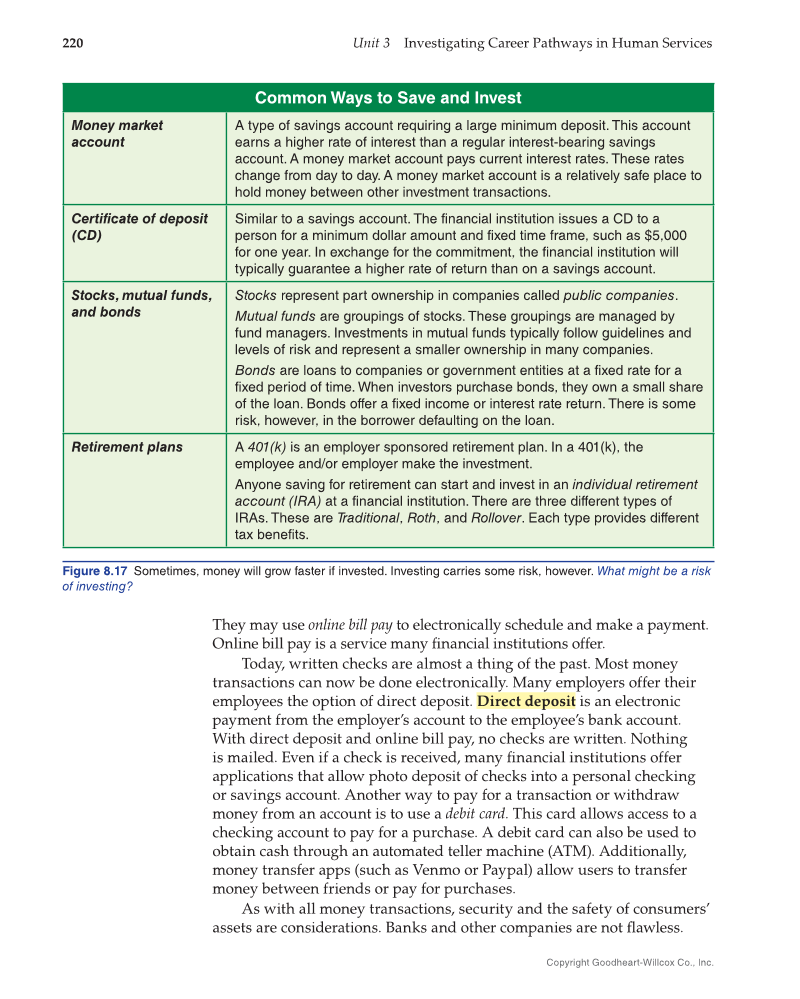Copyright Goodheart-Willcox Co., Inc. 220 Unit 3 Investigating Career Pathways in Human Services They may use online bill pay to electronically schedule and make a payment. Online bill pay is a service many fi nancial institutions offer. Today, written checks are almost a thing of the past. Most money transactions can now be done electronically. Many employers offer their employees the option of direct deposit. Direct deposit is an electronic payment from the employer’s account to the employee’s bank account. With direct deposit and online bill pay, no checks are written. Nothing is mailed. Even if a check is received, many fi nancial institutions offer applications that allow photo deposit of checks into a personal checking or savings account. Another way to pay for a transaction or withdraw money from an account is to use a debit card. This card allows access to a checking account to pay for a purchase. A debit card can also be used to obtain cash through an automated teller machine (ATM). Additionally, money transfer apps (such as Venmo or Paypal) allow users to transfer money between friends or pay for purchases. As with all money transactions, security and the safety of consumers’ assets are considerations. Banks and other companies are not fl awless. Common Ways to Save and Invest Money market account A type of savings account requiring a large minimum deposit. This account earns a higher rate of interest than a regular interest-bearing savings account. A money market account pays current interest rates. These rates change from day to day. A money market account is a relatively safe place to hold money between other investment transactions. Certificate of deposit (CD) Similar to a savings account. The financial institution issues a CD to a person for a minimum dollar amount and fixed time frame, such as $5,000 for one year. In exchange for the commitment, the financial institution will typically guarantee a higher rate of return than on a savings account. Stocks, mutual funds, and bonds Stocks represent part ownership in companies called public companies. Mutual funds are groupings of stocks. These groupings are managed by fund managers. Investments in mutual funds typically follow guidelines and levels of risk and represent a smaller ownership in many companies. Bonds are loans to companies or government entities at a fixed rate for a fixed period of time. When investors purchase bonds, they own a small share of the loan. Bonds offer a fixed income or interest rate return. There is some risk, however, in the borrower defaulting on the loan. Retirement plans A 401(k) is an employer sponsored retirement plan. In a 401(k), the employee and/or employer make the investment. Anyone saving for retirement can start and invest in an individual retirement account (IRA) at a financial institution. There are three different types of IRAs. These are Traditional, Roth, and Rollover. Each type provides different tax benefits. Figure 8.17 Sometimes, money will grow faster if invested. Investing carries some risk, however. What might be a risk of investing?
